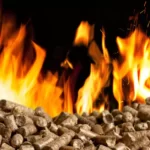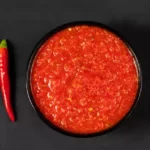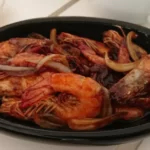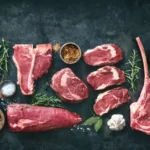Smoked food is traditionally synonymous with meats, but there’s a whole world of flavor that goes beyond the barbecue. Smoker cooking allows a depth of flavor that can’t be matched by other cooking methods. It infuses food with an earthy, rich taste that accentuates natural flavors.
The versatility of a smoker isn’t confined to the realms of pork, beef, or chicken. Believe it or not, smoker cooking can elevate many non-meat foods, imparting an unbeatable smoky profile that enhances the original taste and texture. A variety of foods, from fruits to beverages, can experience a gourmet transformation in a smoker.
By extending the use of your smoker, not only will you enrich your culinary repertoire, but you’ll also discover a new appreciation for food. The smoky aroma that fills the air is just a hint of the incredible flavors that await when you step out of the meat-smoking box.
Principles of Smoker Cooking
Understanding Heat and Smoke
Smoker cooking is an art, and understanding its principles is key to mastering it. Central to the process is the control of heat and smoke. The low and slow method of cooking over indirect heat, where the food isn’t directly above the fire, is the heart of smoker cooking.
Importance of Controlling Temperature
Precise control of temperature is vital for perfect smoker cooking. Fluctuating temperatures can alter the cooking time and affect the food’s texture and flavor. Monitoring and maintaining a consistent temperature ensures the food is properly cooked and full of smoky flavor.
Impact of Wood Selection on Flavor
Different wood types impart different flavors. Hardwoods like hickory, mesquite, or oak give strong flavors, while fruitwoods like apple or cherry offer a milder, sweeter taste. The choice of wood can dramatically impact the end result, offering a fun way to experiment with different flavor profiles.
Introduction: Broadening the Horizon of Smoker Cooking
Smoked food is traditionally synonymous with meats, but there’s a whole world of flavor that goes beyond the barbecue. Smoker cooking allows a depth of flavor that can’t be matched by other cooking methods. It infuses food with an earthy, rich taste that accentuates natural flavors.
The versatility of a smoker isn’t confined to the realms of pork, beef, or chicken. Believe it or not, smoker cooking can elevate many non-meat foods, imparting an unbeatable smoky profile that enhances the original taste and texture. A variety of foods, from fruits to beverages, can experience a gourmet transformation in a smoker.
By extending the use of your smoker, not only will you enrich your culinary repertoire, but you’ll also discover a new appreciation for food. The smoky aroma that fills the air is just a hint of the incredible flavors that await when you step out of the meat-smoking box.
Principles of Smoker Cooking
Understanding Heat and Smoke
Smoker cooking is an art, and understanding its principles is key to mastering it. Central to the process is the control of heat and smoke. The low and slow method of cooking over indirect heat, where the food isn’t directly above the fire, is the heart of smoker cooking.
Importance of Controlling Temperature
Precise control of temperature is vital for perfect smoker cooking. Fluctuating temperatures can alter the cooking time and affect the food’s texture and flavor. Monitoring and maintaining a consistent temperature ensures the food is properly cooked and full of smoky flavor.
Impact of Wood Selection on Flavor
Different wood types impart different flavors. Hardwoods like hickory, mesquite, or oak give strong flavors, while fruitwoods like apple or cherry offer a milder, sweeter taste. The choice of wood can dramatically impact the end result, offering a fun way to experiment with different flavor profiles.
Fruit and Vegetables: A Forgotten Smoker Treasure
Exploring Suitable Fruit Varieties
Fruits such as apples, peaches, and pineapples are excellent for smoking. They absorb smoke well, and the heat intensifies their natural sweetness. Smoked fruits can be used in desserts, salads, or as unique toppings for grilled meats.
Maximizing Vegetable Flavor with a Smoker
Vegetables also shine in a smoker. Corn, peppers, onions, and potatoes are common favorites. The smoke enhances their earthy flavors while the heat makes them tender and juicy. Try smoking a whole head of garlic for a smoky, caramelized spread that’s delicious on toasted bread.
Key Tips for Smoking Fruits and Vegetables
- Cut fruits and vegetables into large chunks to prevent them from falling through the grates.
- Soak fruits in a sugar solution before smoking to enhance their sweetness.
- Brush vegetables with oil to prevent them from drying out and to help them absorb the smoke flavor.
Smoking Cheese: A Culinary Delight
Why Smoke Cheese?
Smoking adds an extra layer of flavor to cheese, transforming it into a gourmet treat. It’s a simple process that can be done at home, resulting in a product that’s often pricey when store-bought.
Types of Cheese Perfect for Smoking
Hard and semi-hard cheeses, like cheddar, gouda, and mozzarella, hold up well in a smoker. They have the right texture and consistency to absorb smoke without melting.
Essential Steps for Smoking Cheese
- Allow the cheese to come to room temperature before smoking.
- Use a cold smoking method to prevent the cheese from melting.
- Wrap the smoked cheese in wax paper and let it rest in the refrigerator for a few days to allow the smoky flavor to penetrate.
Nuts and Seeds: A Smoky, Crunchy Treat
Nut Varieties and Their Unique Smoky Flavors
Almonds, pecans, and peanuts take on a delightful flavor when smoked. They make for a healthy, savory snack or can be used to add a smoky crunch to salads and desserts.
Ideal Conditions for Smoking Seeds and Nuts
Nuts and seeds should be smoked at a low temperature to prevent them from burning. Use a perforated grilling pan or a mesh bag to keep them from falling through the grates.
Safety Measures and Tips
Never leave your smoker unattended, and keep a fire extinguisher nearby. Watch the temperature closely to avoid overheating, which can cause nuts and seeds to burn.
Baked Goods: A New Take on Classic Favorites
Benefits of Smoking Breads and Pastries
Smoking can elevate your favorite baked goods, from bread to pastries. It imparts a distinct flavor, adding an intriguing twist to familiar recipes.
Selecting the Right Dough and Baked Goods
Choose hearty breads and pastries that can withstand the smoking process. Pizza dough, for instance, becomes incredibly flavorful with a hint of smoke.
Essential Techniques for Smoker Baking
Use a pizza stone or a heavy-duty baking sheet to bake in your smoker. Monitor the temperature closely to ensure the baked goods are cooked evenly and not overdone.
Beverages: Unexpected Smoker Creations
Introduction to Smoked Beverages
Adding a smoky flavor to beverages creates a unique taste experience. Smoked lemonade or smoked ice for cocktails can take your beverage game to the next level.
Smoking Techniques for Coffee and Tea
Coffee beans and tea leaves can be smoked for a custom, gourmet brew. The key is to smoke them at a low temperature so they don’t become overly bitter.
Crafting Smoked Cocktails
Smoked ice or smoking the glass can add a hint of smoky flavor to cocktails. It’s a great way to impress guests at your next gathering.
Seafood: A Gourmet’s Delight
Why Seafood in a Smoker?
Smoking seafood imparts a delicate, smoky flavor that enhances the natural taste of the sea. It’s a great method for cooking larger pieces of fish or whole shellfish.
Selecting Seafood for Smoking
Salmon, trout, and mackerel are great options for smoking. Shellfish, like oysters and clams, can also be smoked to perfection.
Best Practices for Smoking Seafood
Seafood should be smoked at a higher temperature than other foods. This helps to seal in the juices and keeps the seafood from drying out.
Safety Tips and Precautions
Importance of Proper Food Handling
Handle food safely to prevent foodborne illnesses. Use clean utensils and make sure to cook food to the recommended internal temperatures.
Essential Safety Equipment
Use heat-resistant gloves and long-handled tools when managing the smoker. These tools help maintain a safe distance from the heat and smoke.
Dealing with Common Smoking Challenges
Smoking requires patience and attention to detail. From maintaining temperature to managing smoke levels, troubleshooting issues is part of the process.
Frequently Asked Questions
Can I Smoke All Types of Cheese?
Hard and semi-hard cheeses are the best choices for smoking. Soft cheeses can melt in the smoker and may not hold the smoky flavor as well.
What is Cold Smoking?
Cold smoking is a method of smoking that uses low temperatures, typically below 90°F. It’s ideal for foods that might melt or cook too quickly at higher temperatures, like cheese or delicate fish.
Can I Smoke Already Cooked Foods?
Yes, you can smoke already cooked foods to add a smoky flavor. However, it’s best to smoke raw foods as the prolonged cooking time allows the smoke to penetrate more deeply.
Conclusion
Expanding the use of your smoker beyond meat opens up a universe of flavor possibilities. From the subtle sweetness of smoked fruits to the savory goodness of smoked cheese, there’s an array of tantalizing foods awaiting your discovery.
Embracing these new flavors can elevate your culinary experiences, offering a fresh perspective on the foods you know and love. With careful attention to the principles of smoking, you can unlock the true potential of your smoker.
So, as you experiment with different foods in your smoker, remember that the essence of smoker cooking is the infusion of flavor. Harness this unique cooking method to create dishes that are memorable, delicious, and full of character. Smoker cooking is more than a technique—it’s a path to culinary creativity, a journey that beckons with each tantalizing whiff of smoke.







